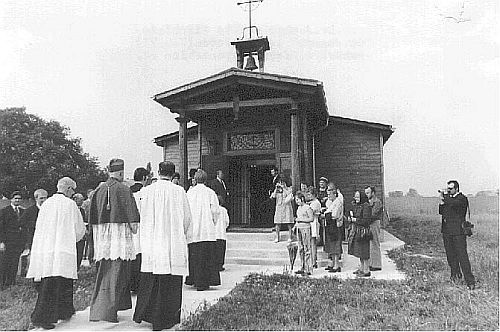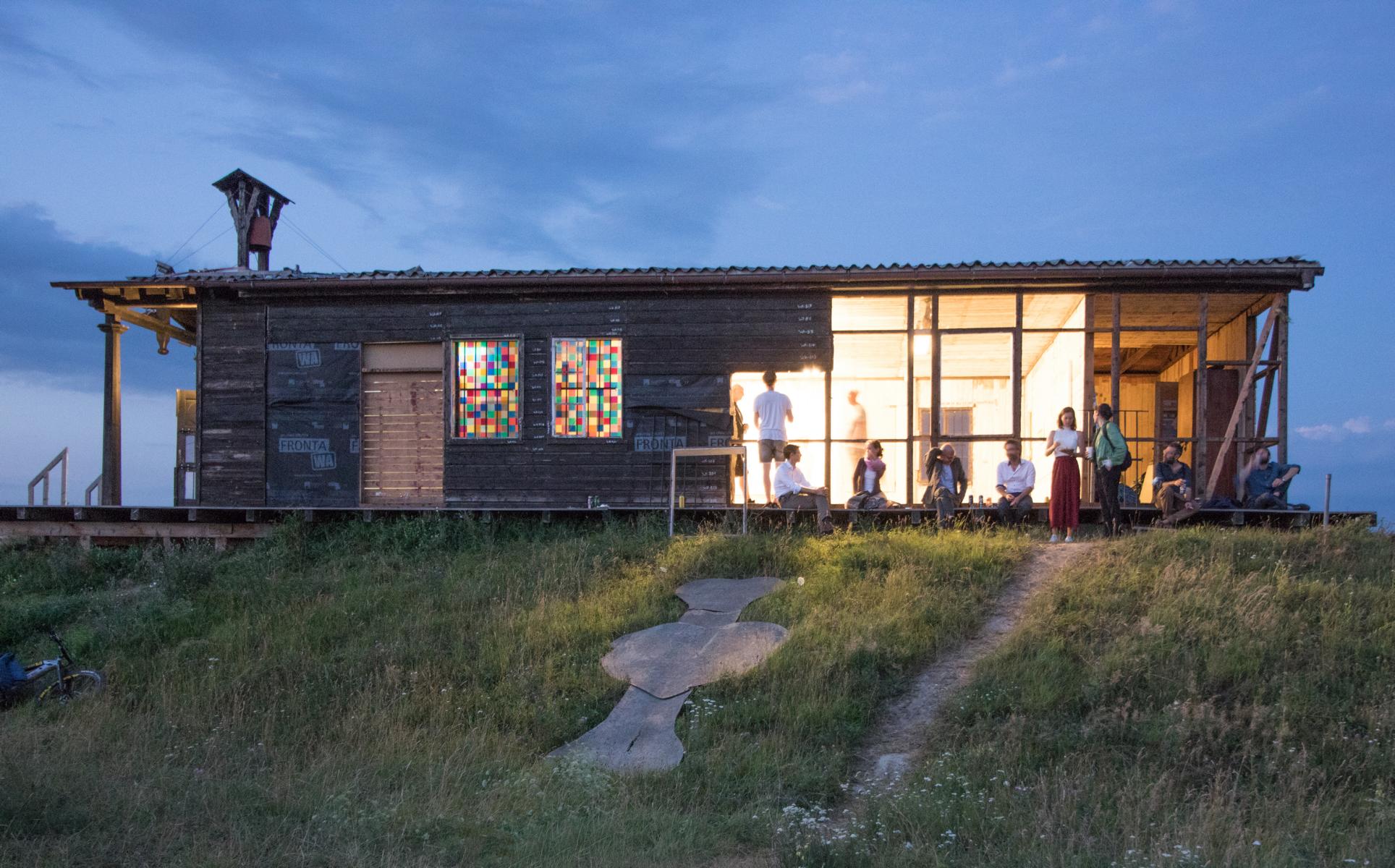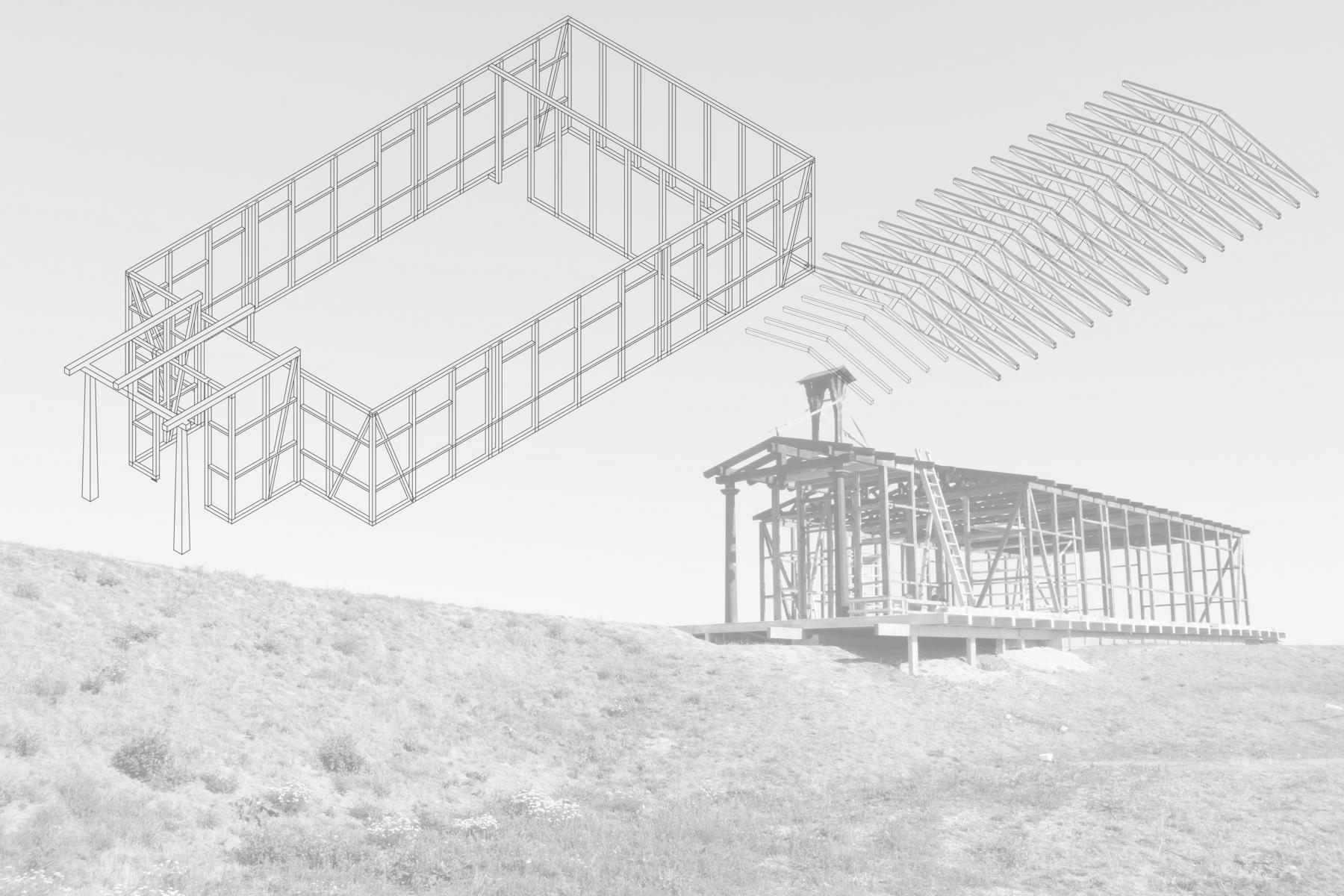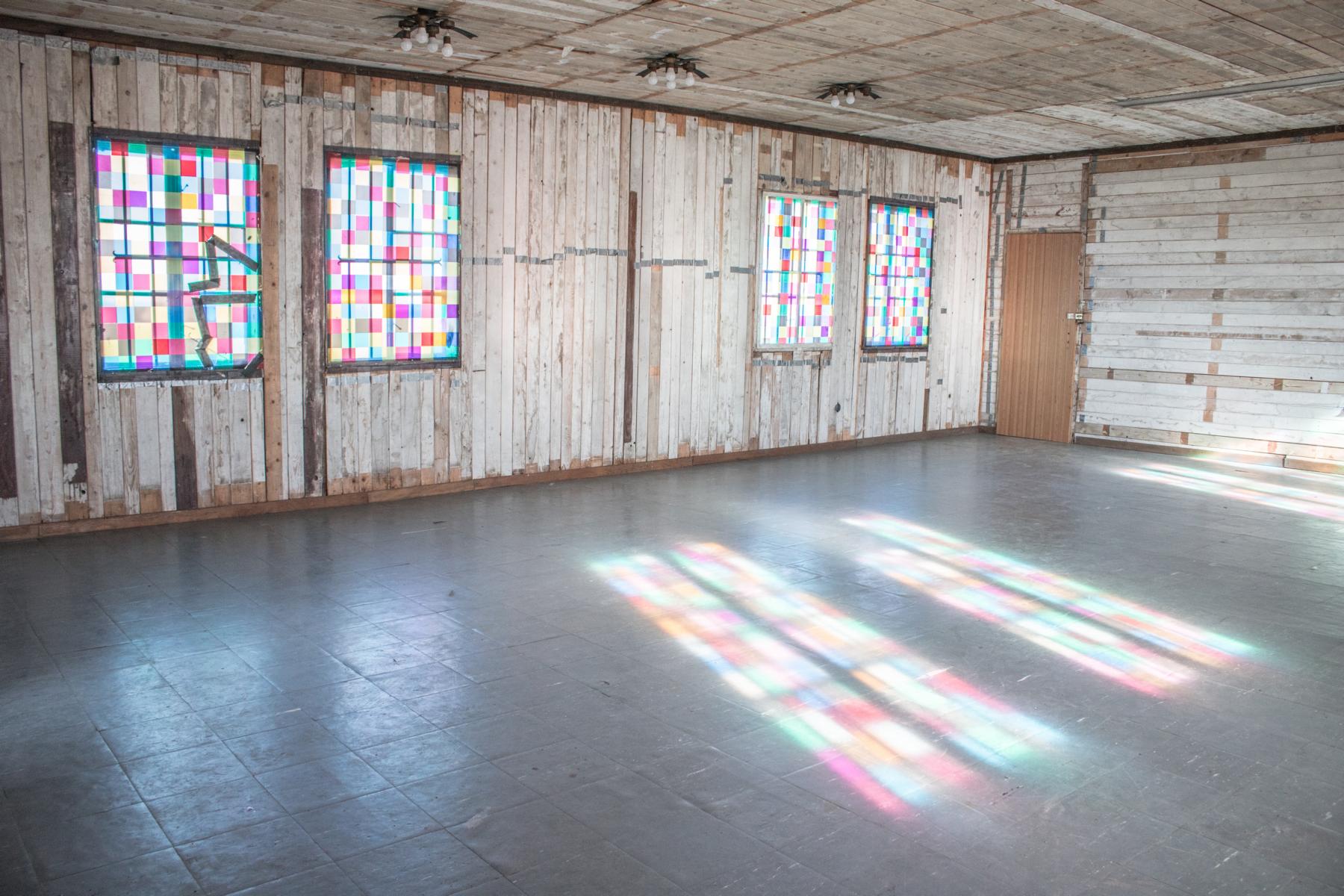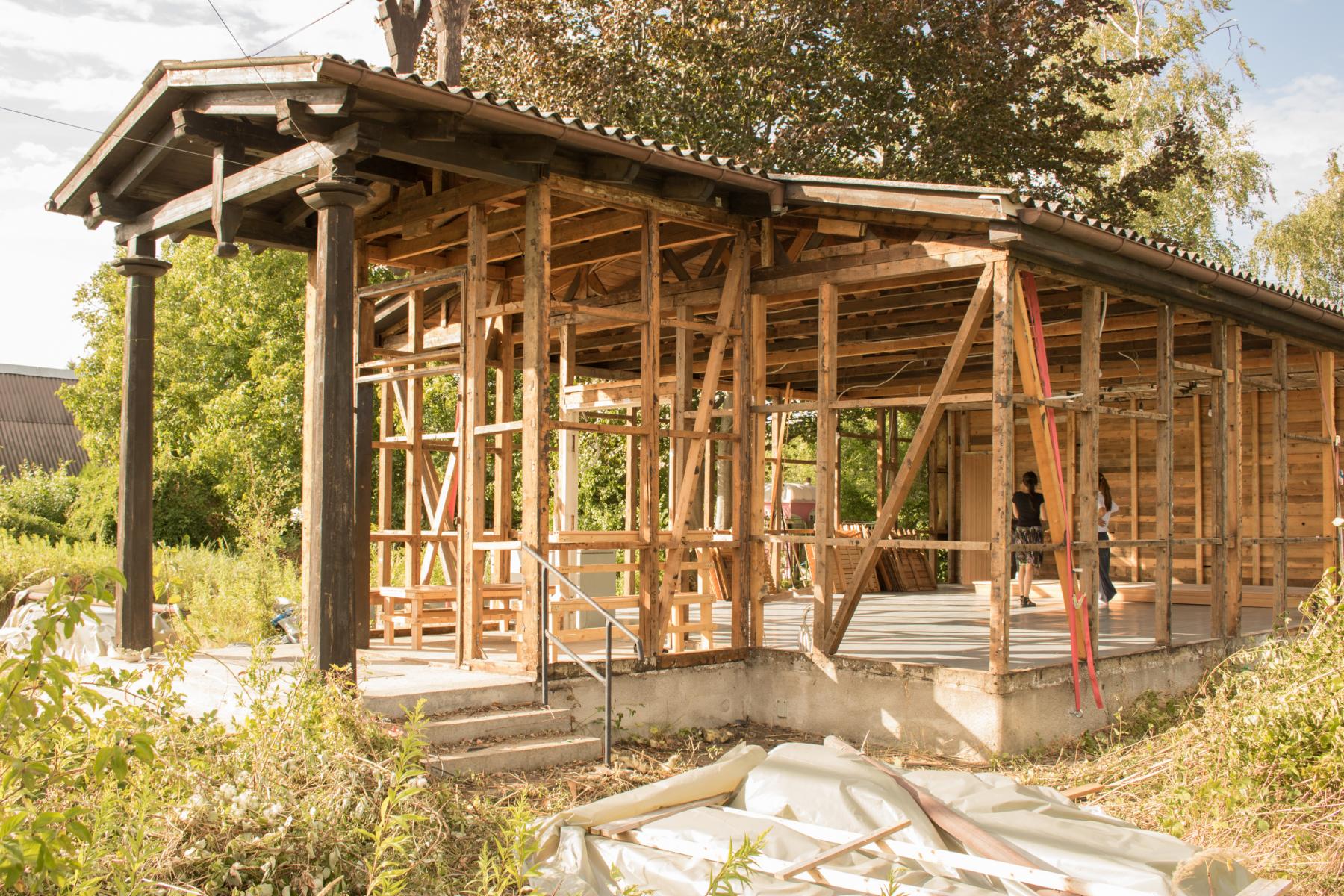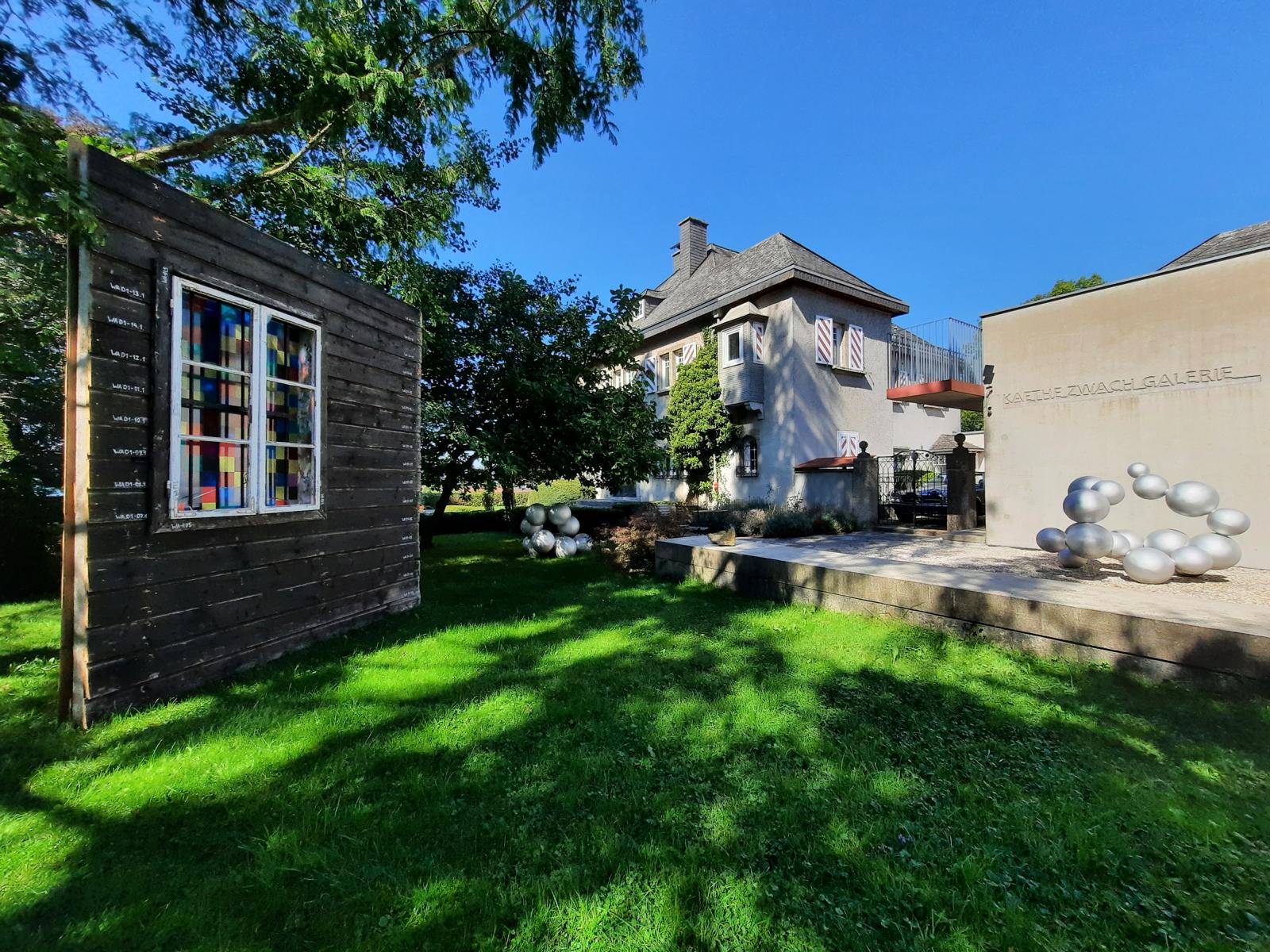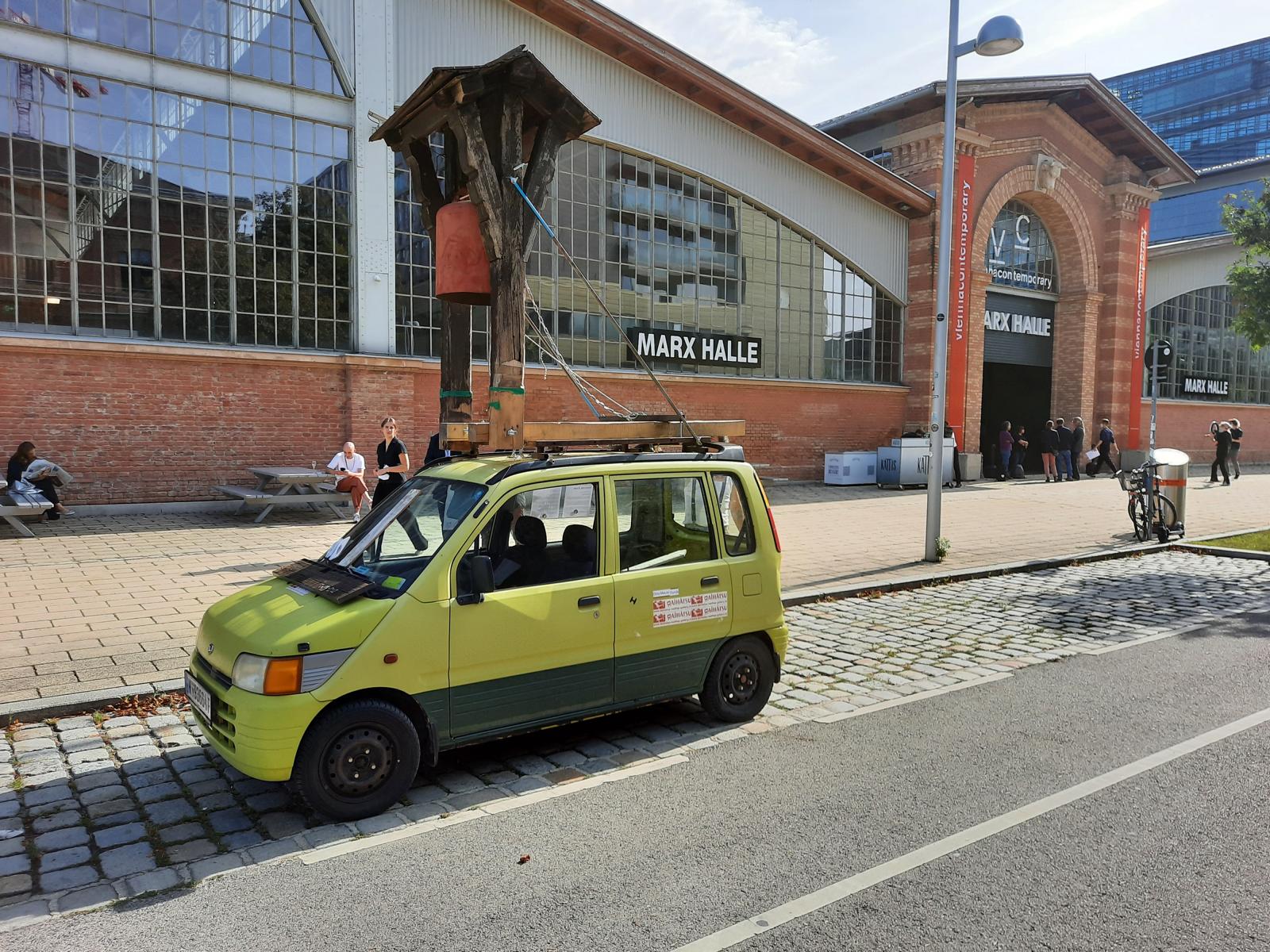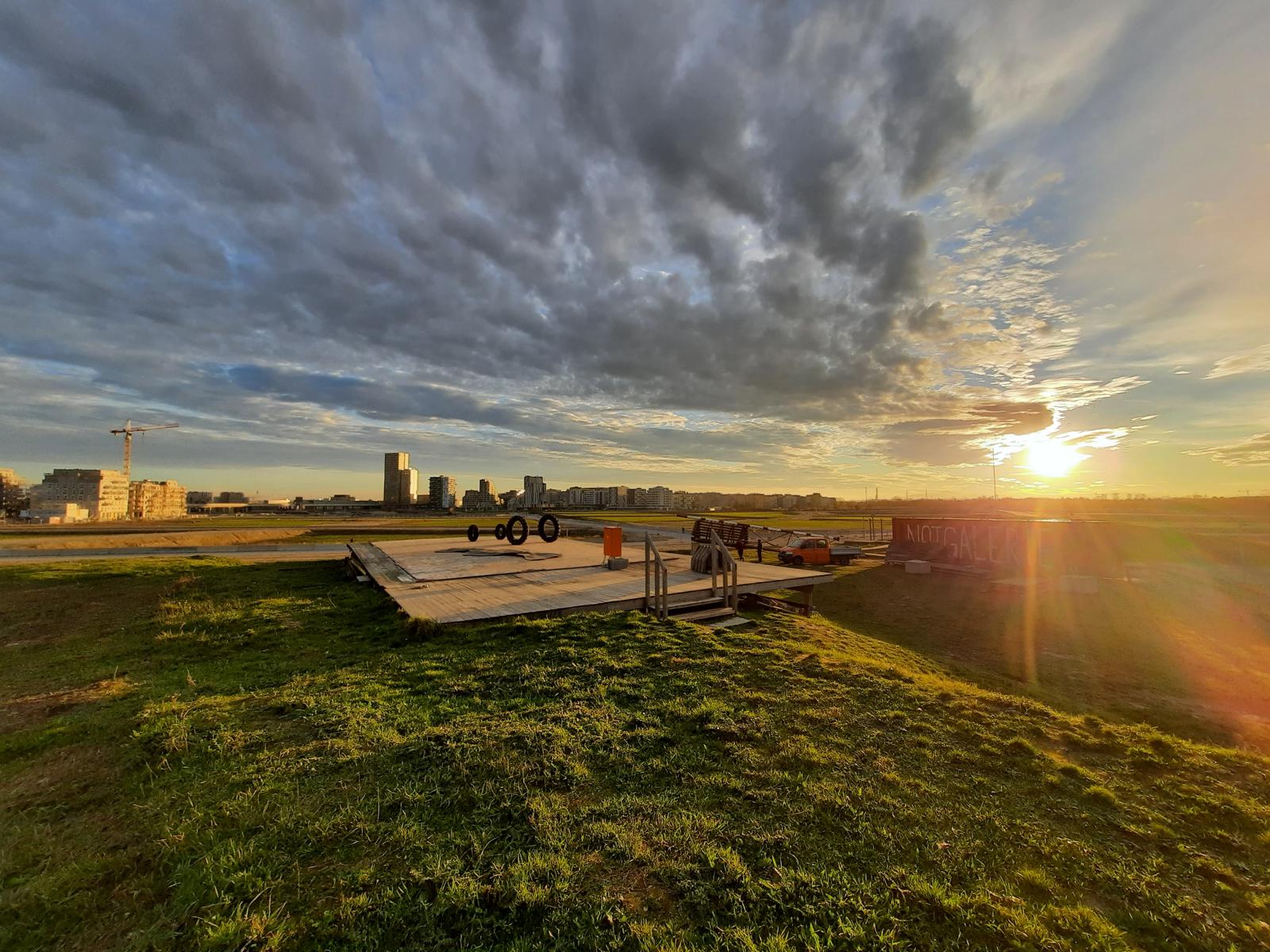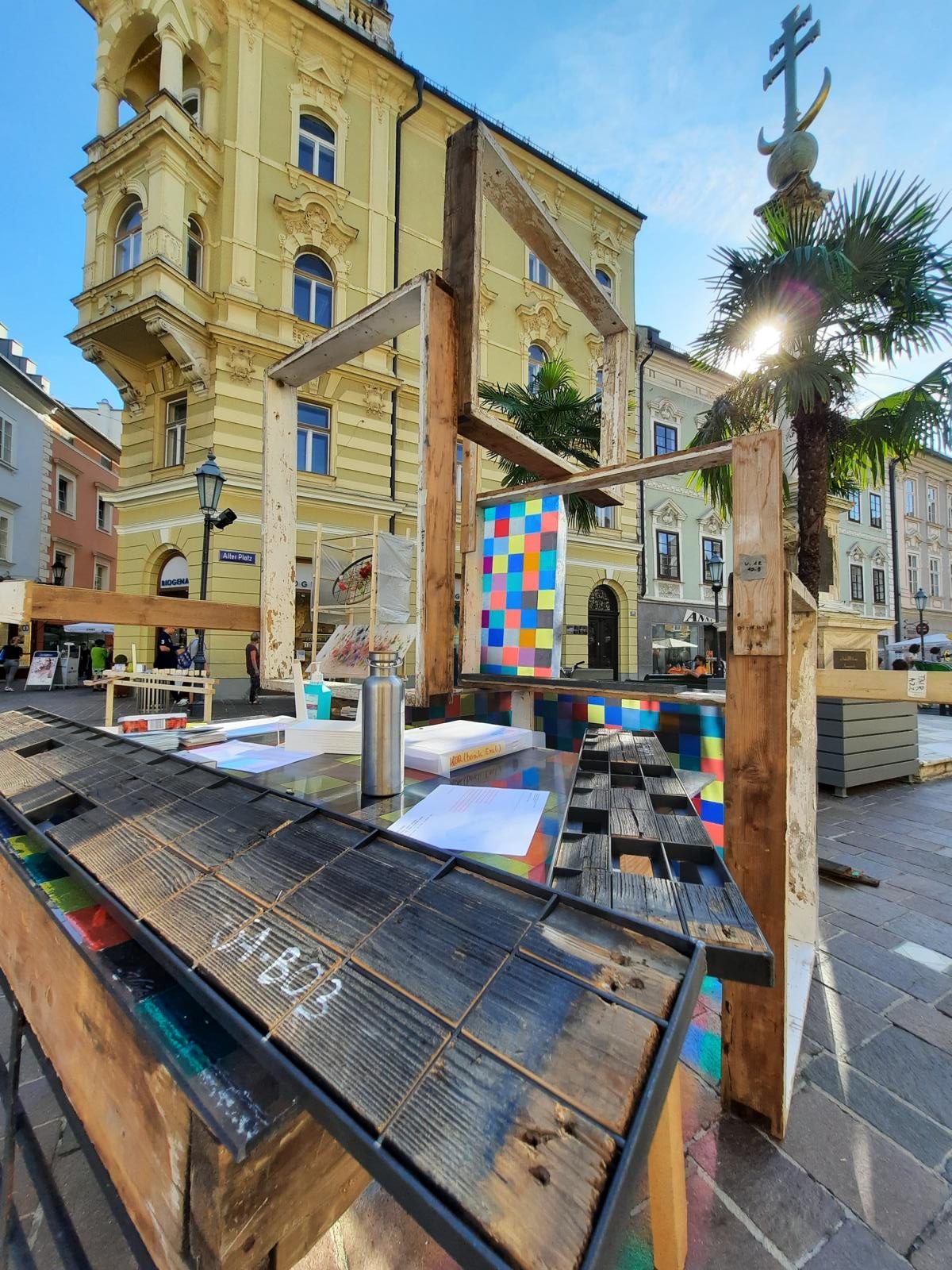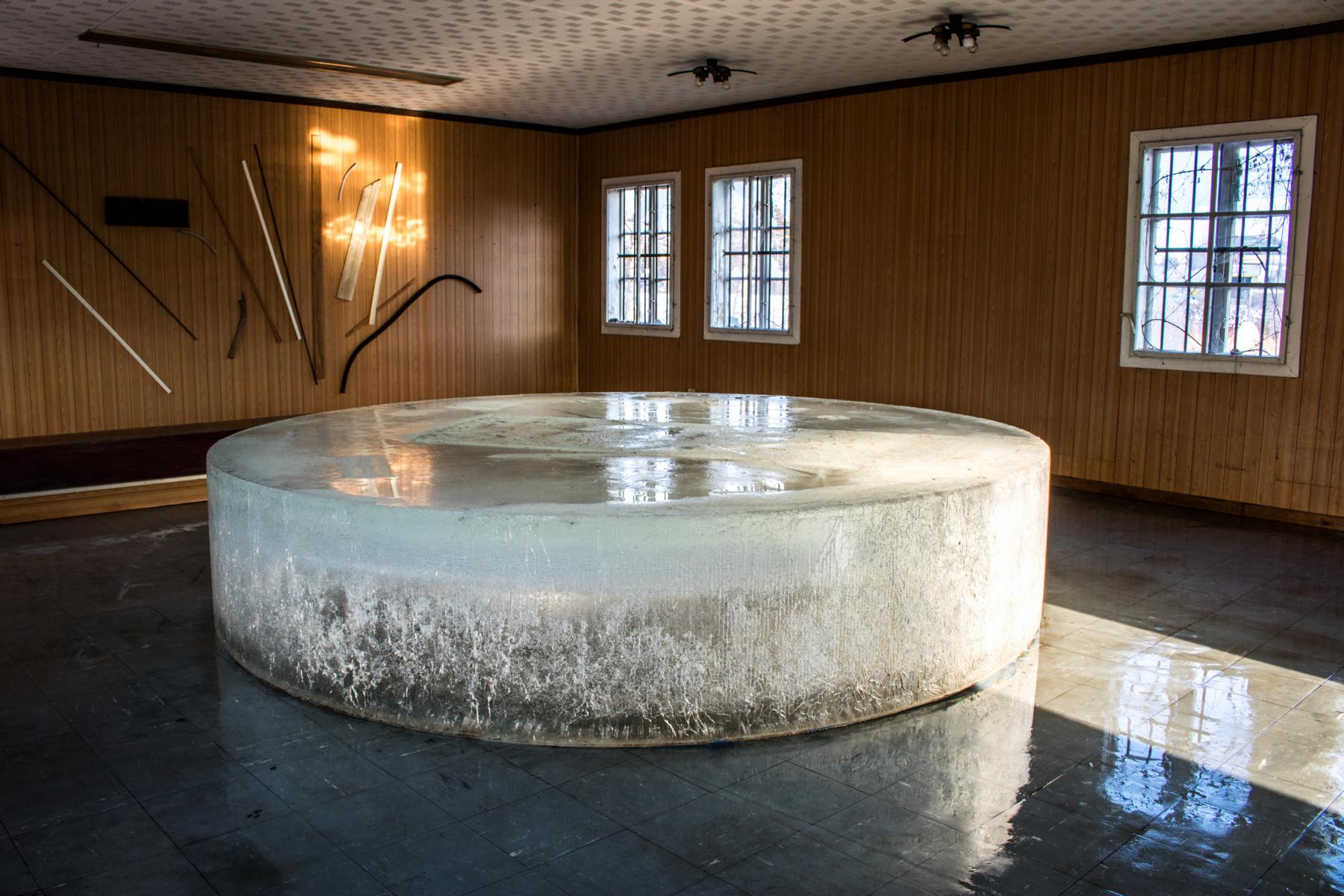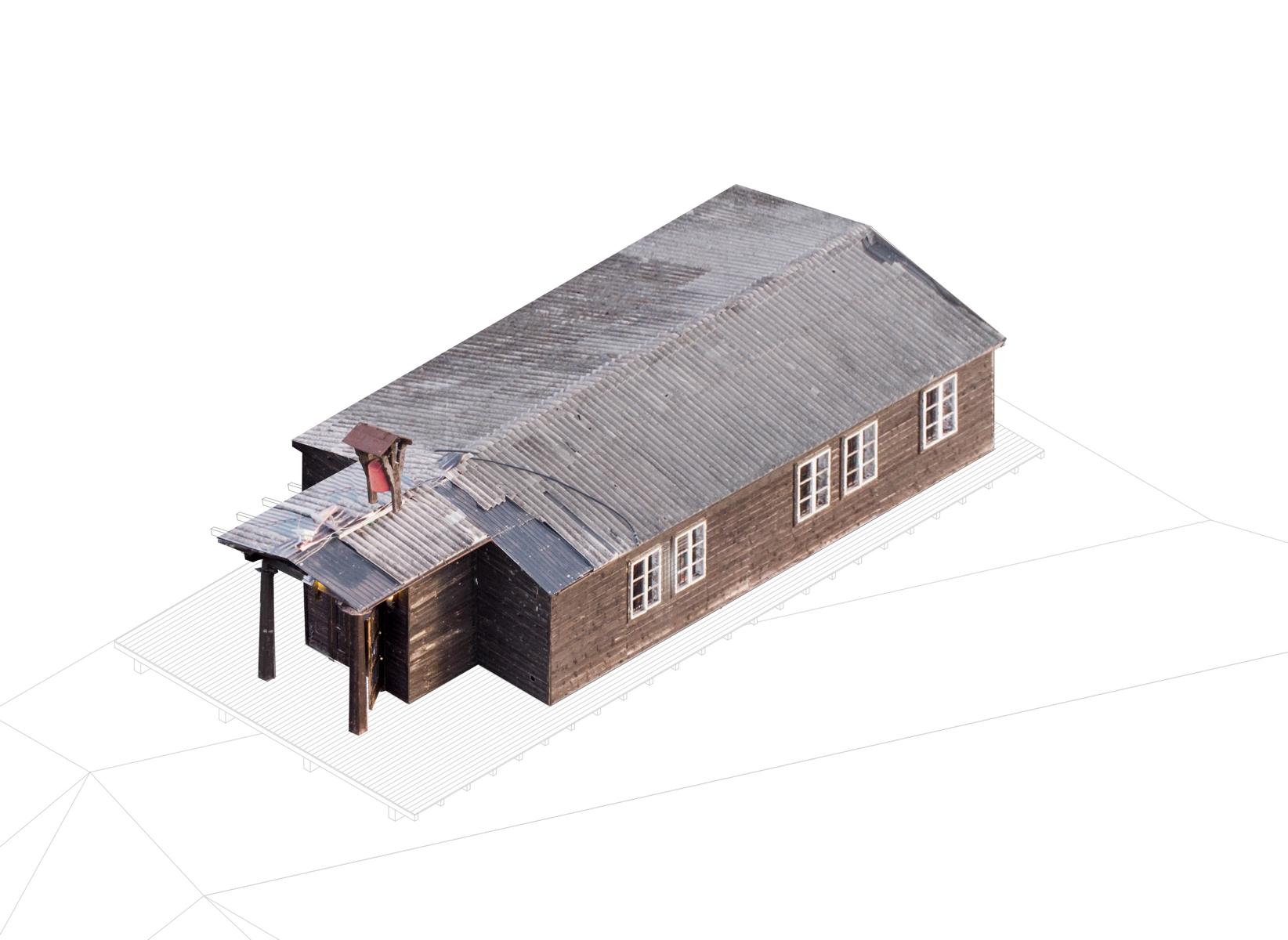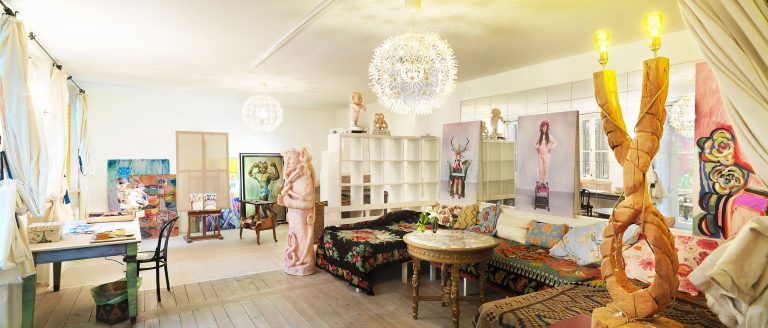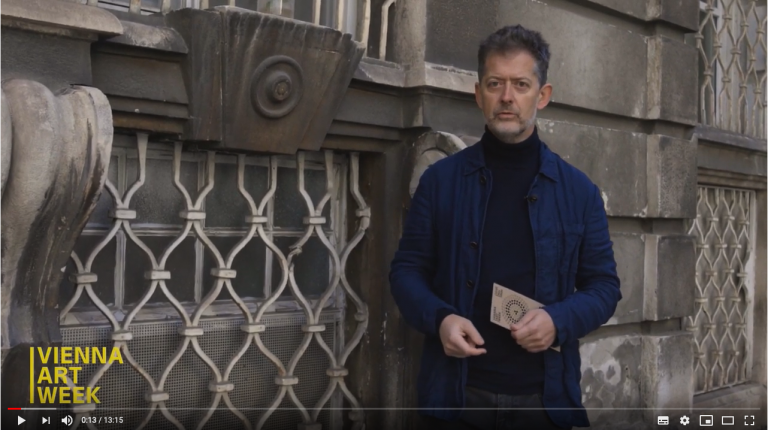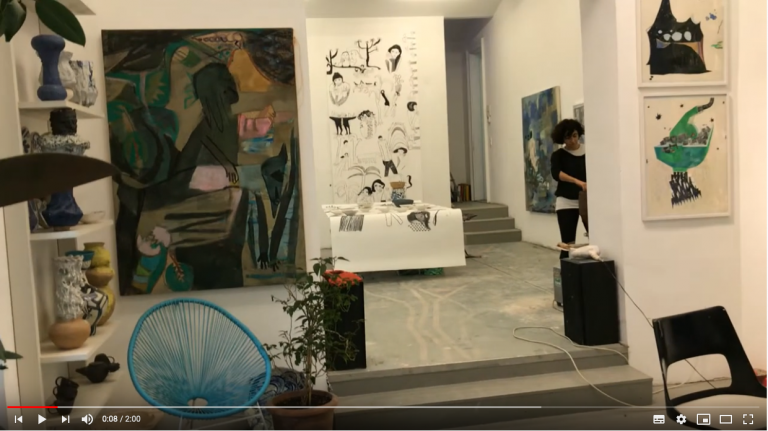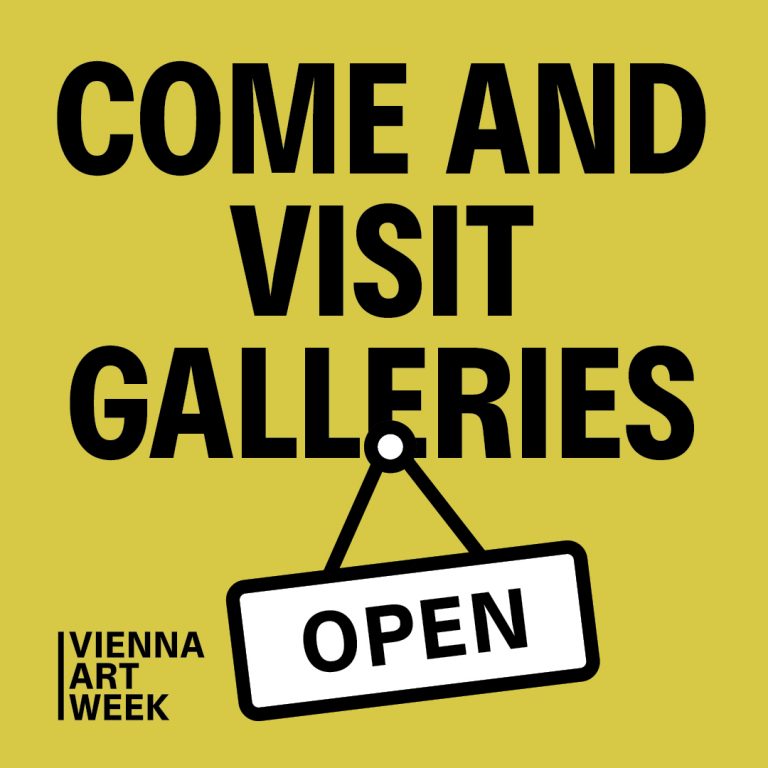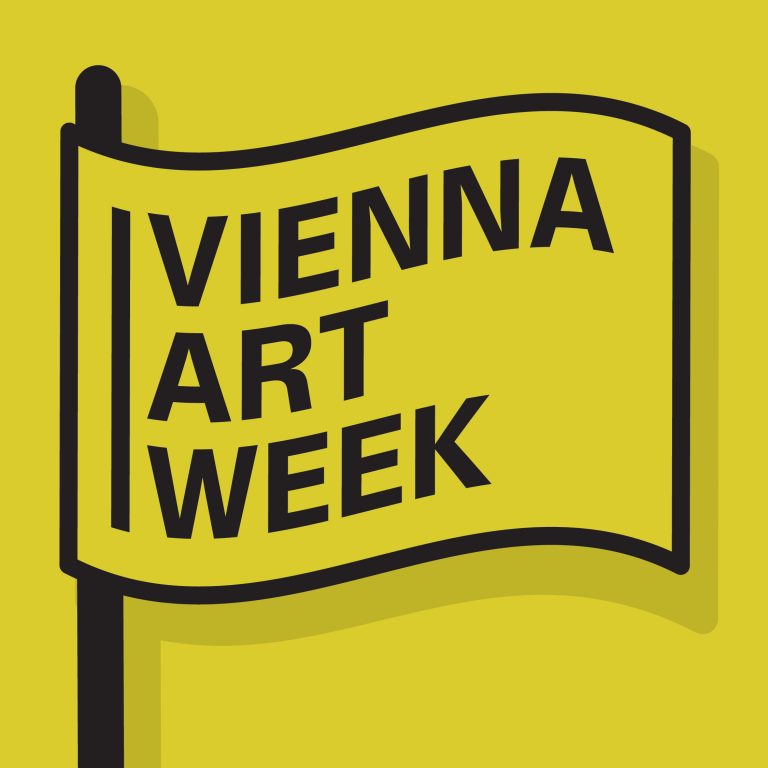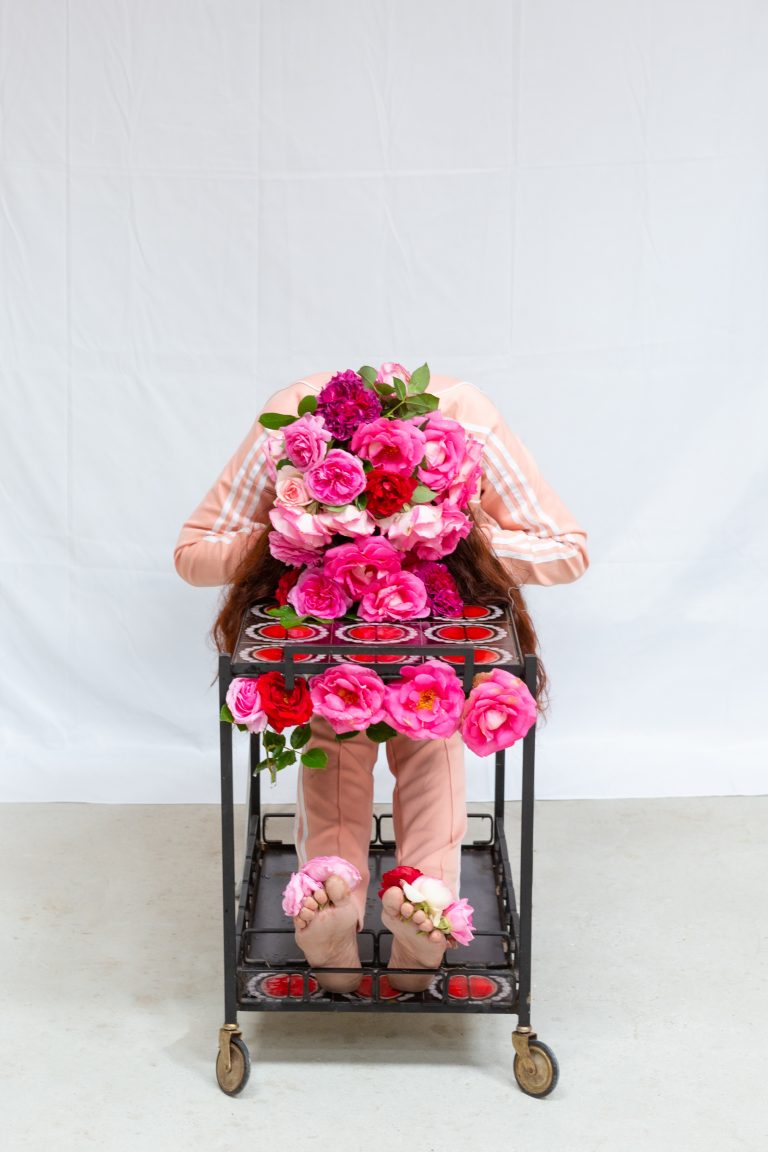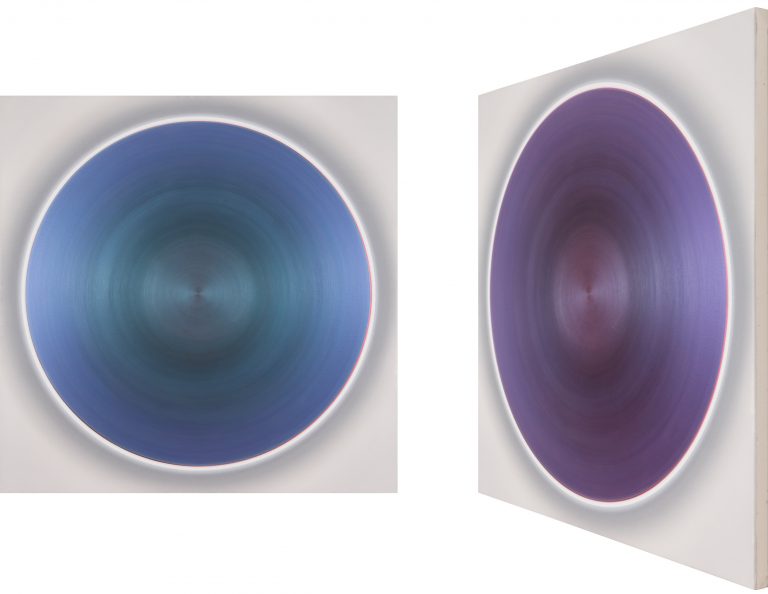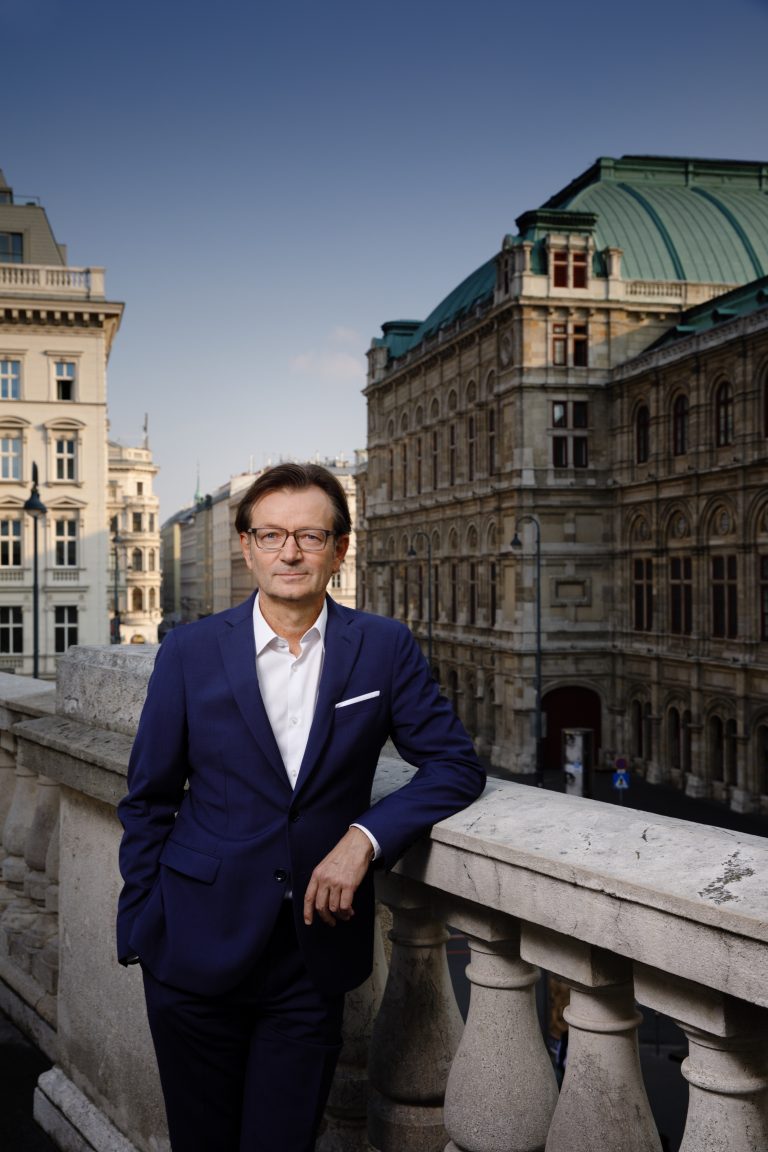Notgalerie
I Will Not Tolerate You Leaving Me Alone
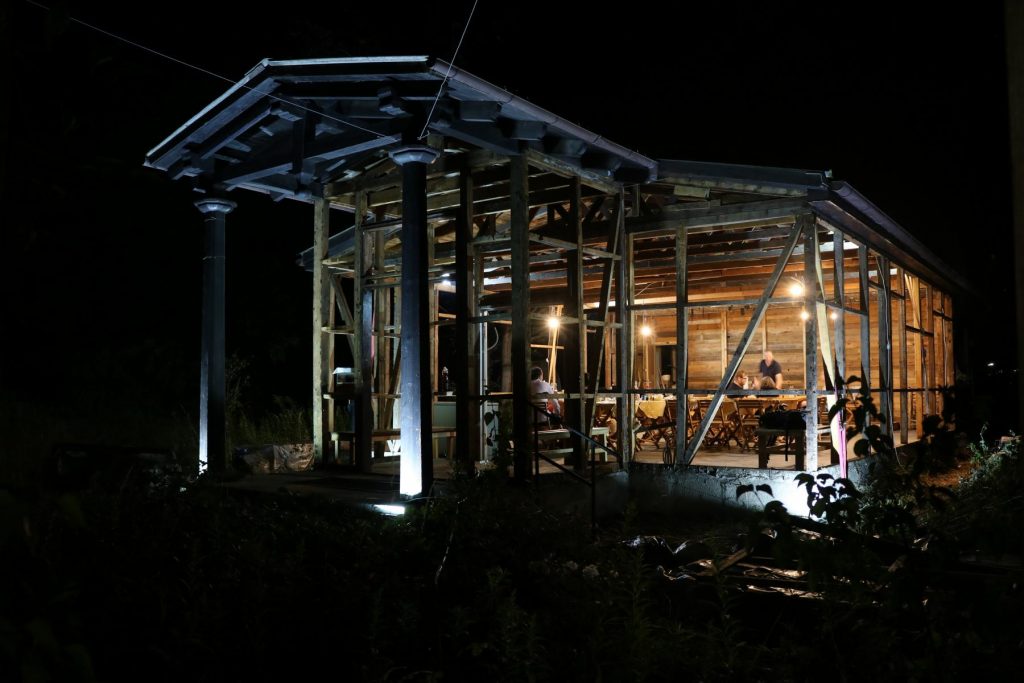
Notgalerie
Would-be visitors to Vienna Art Week’s ‘House of Rituals’ – an exhibition without an audience – are welcomed by a disembodied, angular wooden archway stretched along the garden path. In a courtyard space that is already situated between two entrances, the entryway is made redundant, further losing its practical function and taking on a symbolic one. The arch is an architectural element of Notgalerie – a social sculpture/meta-installation/institution that was initiated by artist Reinhold Zisser in 2015. Resituated here, if visitors were to cross the threshold of the free-standing entryway, they would not enter into the physical space of the Notgalerie. Instead, they arrive at an abandoned house in a state of slight disarray, empty of both inhabitants and audience.
That the entryway’s position in the garden of an abandoned house-turned-exhibition-space sets it between functional and symbolic, also plays into Zisser’s broader interest in the relationship between an object and its representation. At the ‘House of Rituals’, therefore, it is not only the Notgalerie’s physical framing that is superimposed over the site, but its conceptual framing, as well. Detached from the building to which it belongs, it not only becomes an individual art object in itself, but also a gesture just as visitors enact a sort of gesture, knowingly passing through a threshold without transition, becoming part of a larger performance.
After three years at its current site at Seestadt (Aspern Nord U-Bahn station), the Notgalerie has been completely dismantled and its pieces have been dispersed; the community has been invited to take a part – or parts – into temporary custody. The individual pieces have been numbered and catalogued, in a procedure akin to collection management practices in museums and galleries. The dismantling of Notgalerie was itself a participatory performance – unfolding in eight acts, like an extended stage play, from July to October this year – and its echoes resonate here, as well. In fact, it is a continuation of the dissolution process, occurring under the title, “I Will Not Tolerate You Leaving Me Alone”.
Some of the building’s parts are also piled up in a small space inside the ‘House of Rituals’, accessible by a side entrance. Wood boards and panels in various sizes are placed on the floor and on a countertop, alongside a stack of printed contracts detailing the terms of the loan arrangement. That the exhibition cannot open to the public seems to add another performative layer. The parts lay waiting for an absent audience to collect and take care of them; blank contracts await signatures.
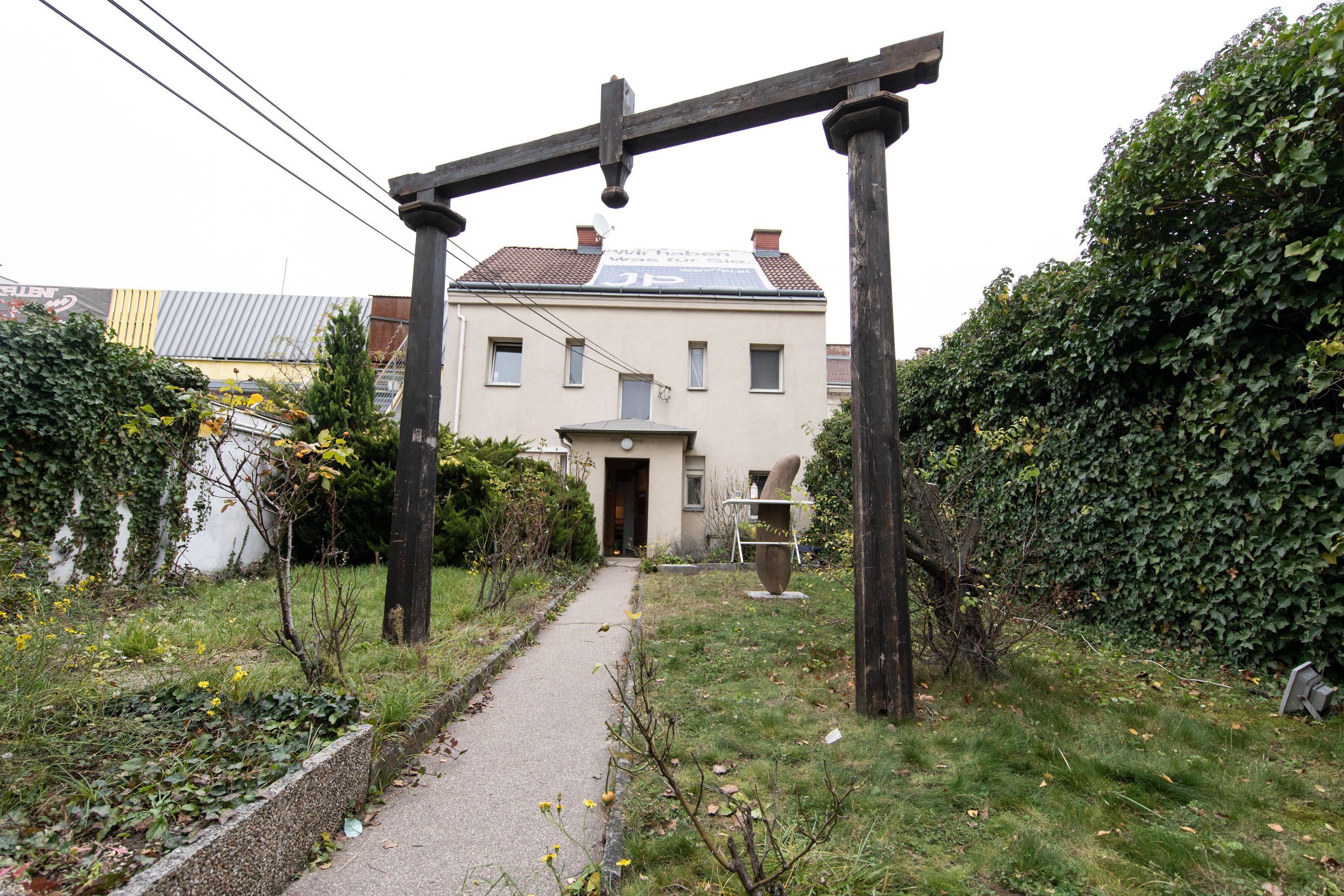
Notgalerie, House of Rituals © VIENNA ART WEEK 2020 Foto: Rainer Fehringer
The wear and tear of the wooden beams, the individual markings, chips and warpings that have developed over the building’s history, its multiple iterations, functions, dis- and re-assemblings, also emphasize their objecthood. They are not just parts of a concrete whole, but also individual, abstract elements. This, Zisser mentions, also prompts some custodians to display the pieces in their homes, hanging them on the wall as artwork.
In the context of the theme of Vienna Art Week, ‘Living Rituals’, the Notgalerie’s manifestation as part of the exhibition at the house at Simmering brings notions of hospitality to the fore. Hospitality, of course, comes with its own customs and rituals – there may be an exchange that takes place: offerings and gestures, words of welcoming and gratitude (sometimes there are even contracts involved). Crossing the threshold, entering someone else’s home, their space, may solidify a guest-host relationship for the duration of the stay: where the guest is welcome, but within certain limitations.
We might think of such relationships and power dynamics in connection to the structures of the ‘art world’, where there is often a clearly defined guest-host relationship that plays out, for instance, between institution and artist. The artist may be invited to do a project or exhibition, but the terms of the arrangement may come with a constraining set of conditions – within a system where artists are often already beholden to institutions.
When Zisser first came up with the idea of dismantling and distributing the Notgalerie’s parts, he says, he thought of it as a way of making it – as an institution – disappear. He realized, however, that it wasn’t really disappearing at all; rather, it was becoming decentralized. In the process, the roles of institution, artist, visitor, curator, etc., are also merged and reconfigured, their distinctions dissolved.
The project concept for “I Will Not Tolerate You Leaving Me Alone”, which is featured on the Notgalerie’s homepage, declares: “The artists themselves are institution and home.” The physical structure of the gallery is dismembered, abstracted, redistributed to the community – which, in turn becomes host to its parts – and, as the concept text continues, “the body of a new institution” is formed.
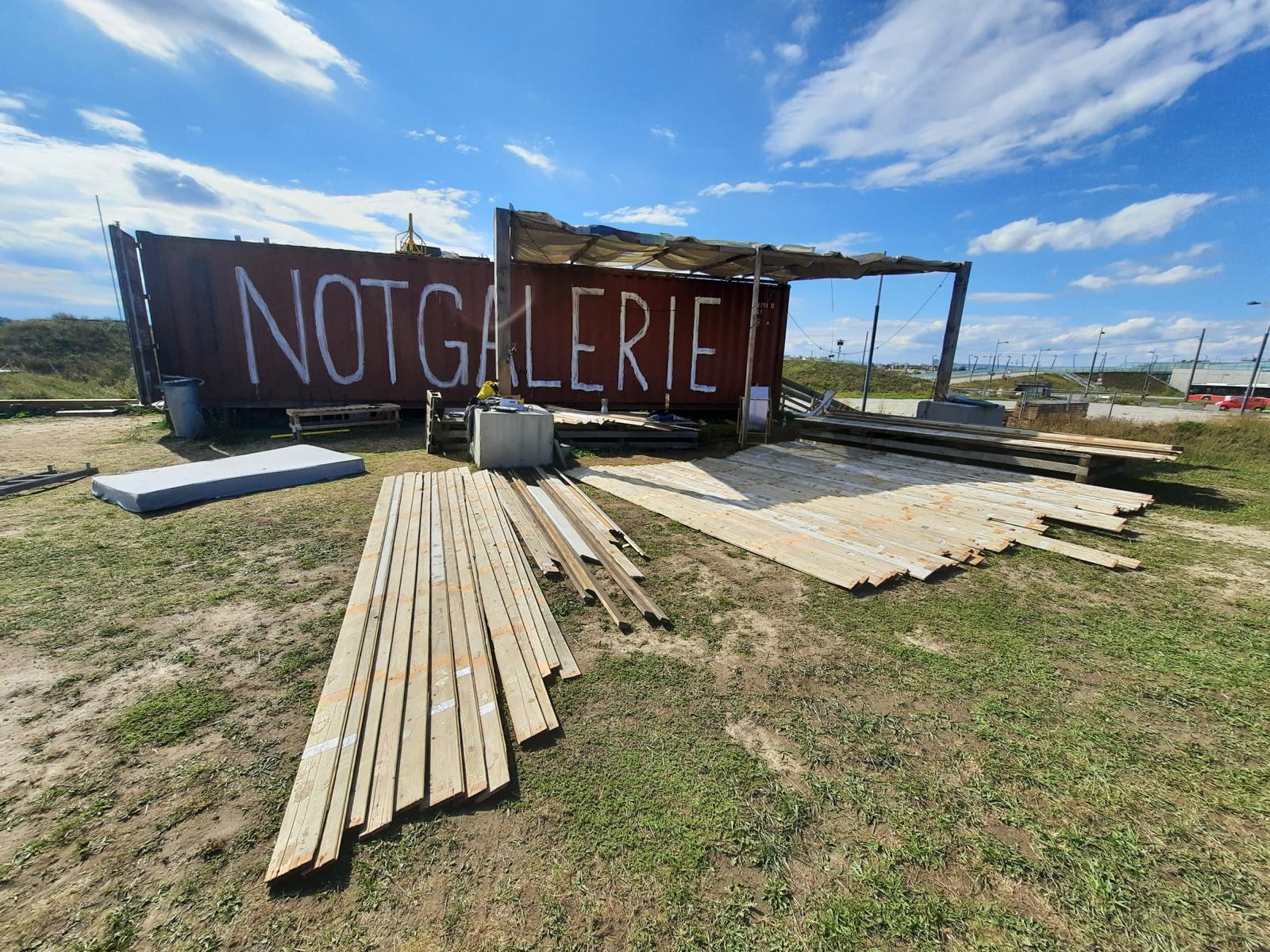
Notgalerie Container, ICH WERDE NICHT DULDEN DASS IHR MICH ALLEINE LASST, Sommer 2020 © Reinhold Zisser
For Zisser, it was necessary for the Notgalerie to have an ending – even if that ending is really a moment of transition to a new iteration, to new possibilities for extending the concept. The artist points out that art always has to have an end, and that end is usually in the market. Prior to the second Covid-19 lockdown, the Notgalerie’s archway and constituent parts were, in fact, initially planned for installation at Dorotheum – one of the largest and oldest auction houses in the world, a major center of the art market – where Zisser would have performed the task of loaning out pieces to interested visitors. In a way, it would have thus met its endpoint in the market. However, Zisser makes clear that no part of the Notgalerie is intended for sale. Instead, it was important to offer the parts for free, but not to own — as participants must take responsibility and care for the objects, and are obliged to return them within five years’ time in order for the Notgalerie to be rebuilt.
Each of Notgalerie’s parts has the potential to operate in a new way, to take on another role – holding multiple potentials at once. This also includes the now buildingless foundation standing at the site at Seestadt, as well as the adjacent storage container, on the side of which “Notgalerie” appears in large letters. The container itself may become another mobile object – possibly relocating to Tirol in early 2021, where the remaining architectural elements kept inside would be made available for further distribution; as it empties out, opening up the possibility for other works to be displayed, as well. Meanwhile, Zisser hopes to continue with the open-air platform at Seestadt over the next year, inviting further interventions and engagements. Currently, the exhibition “The Crack in Eternity is the Now” is on view there, and visitors are invited to rearrange it, add their own interventions, etc. A further manifestation of Notgalerie along the Danube, near Vienna’s city center, is possibly forthcoming, as well: some parts may be installed to establish another site for programming. Not to mention the possible manifestations that could emerge via individual parts that are in the care of the community.
Notgalerie – meaning “emergency gallery” in German – takes its name from its former life as a Notkirche (emergency church). Emergency churches were mainly built to serve areas without a house of worship, or where one had been destroyed by war: responding to a lack of space to collectively practice faith and its rituals. At a time of compounded urgencies and emergencies, of increased precarity for workers in the field of art and culture, and beyond, the idea of an emergency gallery that extends beyond, and consistently transforms, its own physical framework seems to take on a special significance, becoming all the more timely.
(Julianne Cordray)
